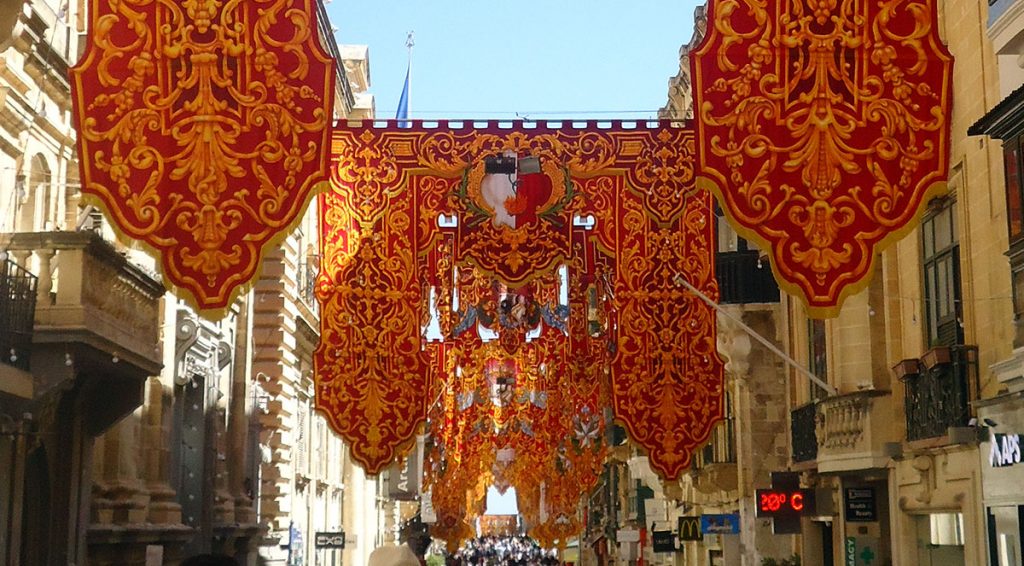
Nougat, the sweet of all Feasts
The very popular sweet confection in Malta and Europe alike is Nougat!
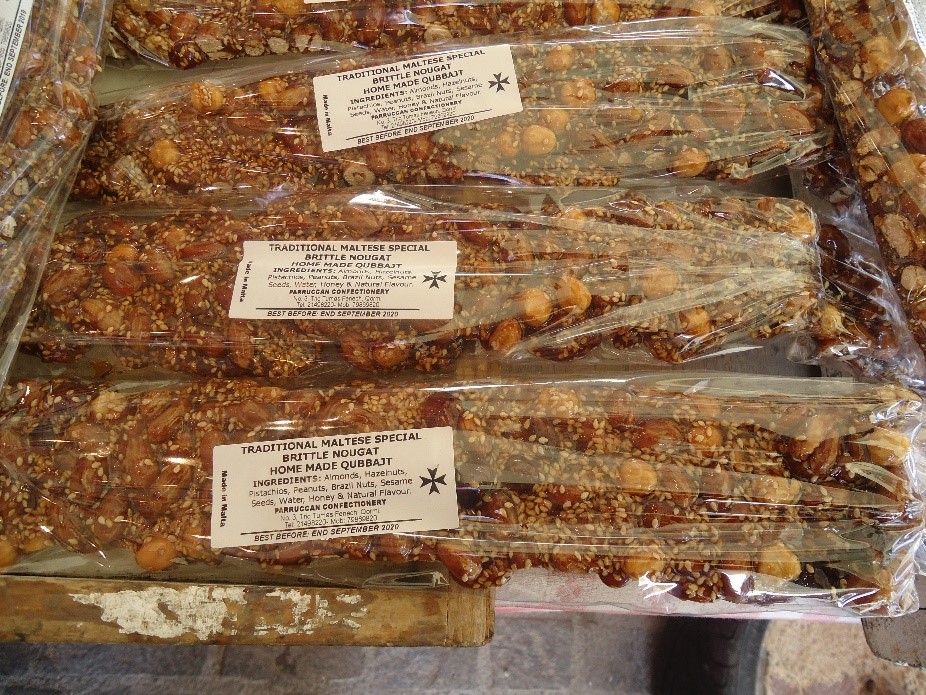
In Malta, there are two types of nougat.
Firstly, there is the Maltese Nougat – by definition it is a Nougatine which is sugar cooked to a caramel colour.
This Maltese style nougat is compactly filled with nuts and given subtle flavourings.
The second type of Nougat, I’d like to describe as the white, European Nougat.
This has a chewy texture and in most cases, also has nuts added. In Malta the most popular nut addition being almond.
This white Nougat can be soft in texture, but is generally firm and chewy. The texture can vary according to the different brands sold.
Multiple flavours of this classical white nougat can be purchased and new flavours are always being created and introduced into the market.
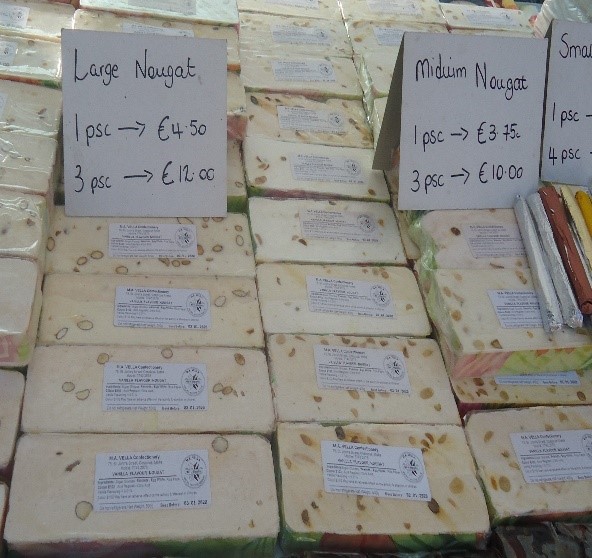
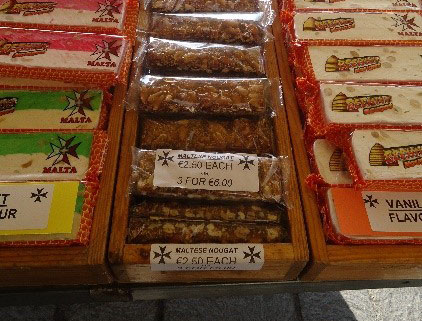
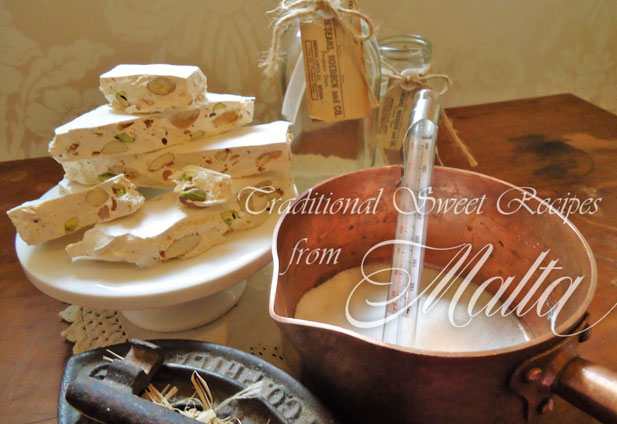
Nougat is made by whipping egg whites and boiling a sugar syrup to a specific temperature. The syrup is then poured into the whites and beaten until stiff and thick. Any nuts or flavourings can then be added.
The firmness is determined by the temperature to which the sugar syrup is cooked. The higher the temperature, the firmer and chewier the nougat becomes.
Pictured to the left is my freshly made nougat. Recipes of both Maltese Nougat and the White European Nougat are contained in Volume 1 Traditional Sweet Recipes from Malta.
This confection has a special place in the Maltese calendar and culinary history.
Nougat has always been a part of each Village ‘Feast’ (Festa in Maltese). Each major church and parish in every village in Malta has its annual feast which is dedicated their patron saint. The village prepares weeks in advance by decorating the streets with colourful banners and sometimes with smaller saint statues on pillars. On the main day of the feast after the mass sermon is held, the patron saint statue is carried out of the church onto the streets of the local village. All the parishioners and locals are present and following. This march is led by the parish priest and other representatives of the parish.
This tradition is centuries old and looks and feels like a procession of the faithful. It is a community event where people come together to share and celebrate their faith. After the procession less formal celebrations are held outside near the parish church, of which food is a major part. The celebrations run late into the night, ending with a spectacular firework display.

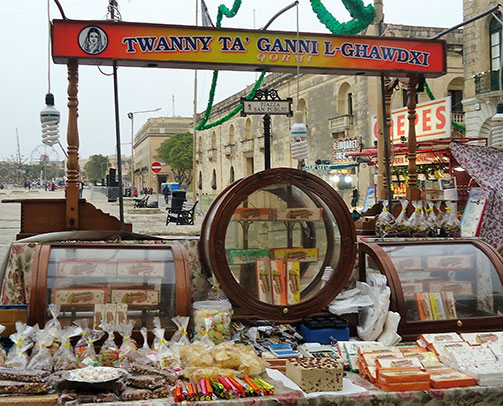
Many vendors sell a variety of foods that are savoury or sweet. Nougat is the key traditional confection associated with the Maltese feast day celebration. Most vendors still have mahogany cabinets to display their selection of nougat and provide samples of their range. More often than not, you can still see the antique scales as part of their visual display amongst the range of Nougats offered.
Typically at these feasts within the selection of nougat, small rolls of cigar shaped nougat are sold. This nougat is wrapped in colourful foils and is nut free. The consistency is quite soft and is ideal for an individual portion that is also suitable for young children as it easy to eat.
These nougat rolls are called Peniti.

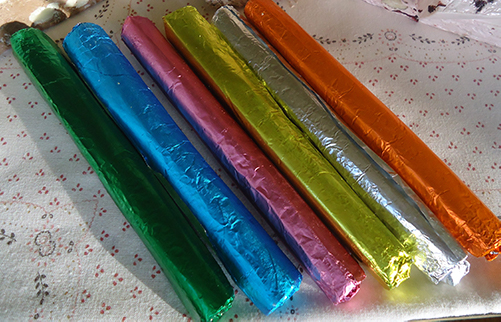
Peniti
Pictured to the left are examples of my homemade flavoured nougat from the recipes within my second publication Volume 2 Traditional Sweet Recipes from Malta.
Thank you for joining me in this article.
Happy baking and confectionery making until next time.